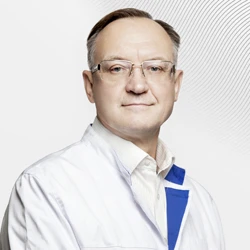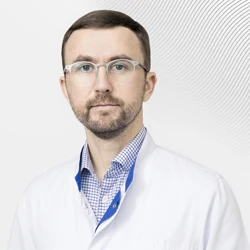Cranioplasty
Cranioplasty surgery in Moscow can be performed at the European Medical Center (EMC) .
Advantages of cranioplasty of the skull at the EMC (Moscow)



Indications for surgery
Cranioplasty is an open surgery that is performed for therapeutic purposes to prevent direct brain injury. Surgery can also be performed for cosmetic reasons after a major post-trepanation defect.
Among the frequent indications for surgery are traumatic brain injuries, strokes with brain edema, when decompression trepanations are necessary, as well as correction of aesthetic imperfections of the skull. The operation is performed for certain oncological diseases. Often, a malignant neoplasm affects the bones. In this case, it is important to perform their resection in order to prevent the formation of a recurrence. Then cranioplasty is performed to restore the integrity of the skull bones. This operation also helps to cope with trepanated skull syndrome, in which a person feels worse when atmospheric pressure changes (headaches and other uncomfortable conditions appear). Thanks to cranioplasty, the blood flow of the brain and intracranial pressure are normalized, and the rehabilitation time after cranial trepanation is shortened.
Features of cranioplasty surgery
At the beginning of the operation, surgeons excise the scars of previous injuries (if any). Then the desired defect is identified and the edges of the bones are prepared for implantation. If the patient has defects in the meninges, it is also important to eliminate them. Then an implant is fixed to the bones (in EMC, it is made individually for each patient before surgery).
Different materials are used for the operation. There is cranioplasty of the skull with a titanium plate, its own bone, porous hydroxyapatite, methyl methacrylate (Palacos) .
Cranioplasty with hydroxyapatite
Hydroxyapatite is an insertion part of a natural bone. After cranioplasty, porous hydroxyapatite implants grow into capillaries and vessels, and then into connective tissue. The body does not perceive such implants as a foreign body. Gradually, the patient's bone tissue forms, and partial or even complete regeneration occurs after cranioplasty. Hydroxyapatite implants are excellent for closing extensive skull defects and are used in the area of the sinuses (the lower parts of the frontal bone, temporal bone, where there is a high risk of infection of the implant with improperly selected material). Cranioplasty of the skull with hydroxyapatite is the most expensive type of surgery, but it avoids complications.Titanium implants and titanium plate in cranioplasty
Titanium implants are manufactured by forging or laser sintering. The EMC clinic uses cellular titanium implants made using the second method. This implant is biocompatible, it is more durable and has a lower risk of infection. In addition, it is compatible with MRI. To make an ideal titanium implant in accordance with the size and configuration of the skull defect, the results of three-dimensional computed tomography performed before cranioplasty of the skull are used.
Cranioplasty with methyl methacrylate (Palacos)
In some cases, when performing cranioplasty of small cranial defects, an implant may form during surgery. The EMC clinic uses Palacos R (methyl methacrylate). This material is well studied, reliable and widely used in world practice.Rehabilitation after cranioplasty
The rehabilitation period after cranioplasty lasts from three days to a week. If the patient had concomitant neurological deficits, he needs more time to recover. A team of rehabilitologists and neurologists participates in the rehabilitation process after cranioplasty of the patient, if necessary, doctors of other categories can join the treatment.
Contraindications for surgery
The main contraindications are the presence of an active purulent process, pneumonia, and urinary infection. In this case, it is important to eliminate the inflammatory process first and only then proceed to surgery.
Why the EMC
The first and only clinic in Russia, created in the image of the world's leading clinics
EMC is a multidisciplinary center offering patients a high level of medical services and a personalized approach
Worldwide recognition and awards
 Learn more
Learn more
Worldwide recognition and awards
 Certificates and licenses
Certificates and licenses
Make an appointment for a consultation
Specify your contacts and we will contact you to clarify the details
Reviews
and new products of the EMC


